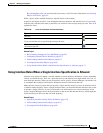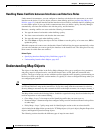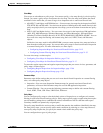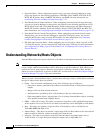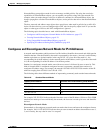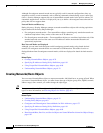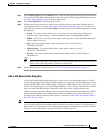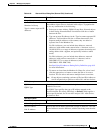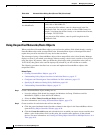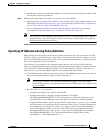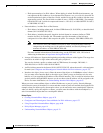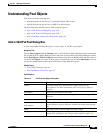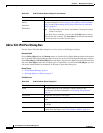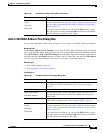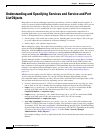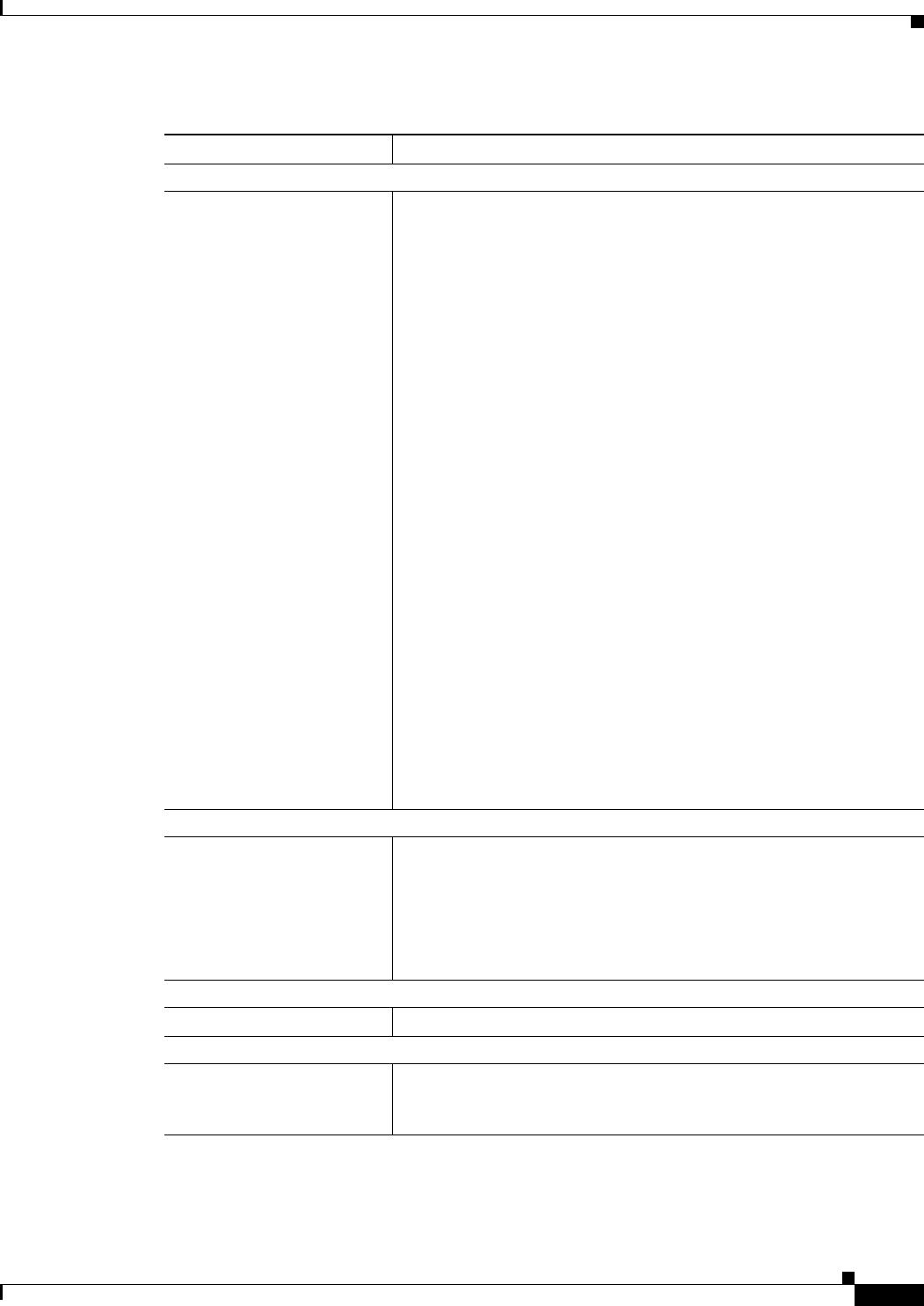
6-79
User Guide for Cisco Security Manager 4.4
OL-28826-01
Chapter 6 Managing Policy Objects
Understanding Networks/Hosts Objects
Group object options
Available Networks/Hosts
Members In Group
Type in comma separated IP
addresses
The Members In Group list shows the networks, hosts, and other
network/host objects that are included in this object. To populate the
list, do any combination of the following:
• Select one or more Address, FQDN, Group, Host, Network objects
in the Existing Networks/Hosts list and then click the >> button
between the lists.
• Type one or more IP addresses in the “Type in comma separated IP
addresses” field and then click the >> button between the lists.
Separate multiple addresses with commas; they are added as
separate lines in the Members list.
For IPv4 addresses, you can include host addresses, network
addresses (with subnet masks entered after a / character, such as
10.100.10.0/24), or a range of addresses (separate the starting and
ending address with a hyphen, and optionally include a subnet
mask).
For IPv6 addresses, you can include host addresses, network
addresses (with prefixes entered after a / character, such as
2001:DB8::/32), or a range of addresses (such as
2001:DB8::1-2001:DB8::100).
See Specifying IP Addresses During Policy Definition, page 6-81
for more information.
• To remove an item from the Members In Group list, select it and
click the appropriate << button to return the item to its source
location. You can select and remove multiple items at one time.
Note Group objects containing a mixture of IPv4 and IPv6 addresses
can be assigned only to policies on ASA 9.0.1 and later devices.
FQDN object options
FQDN
FQDN Type
The fully qualified domain name of a single host; for example,
somehost.cisco.com.
The FQDN Type specifies the type of IP address mapped to the
provided domain: IPv4 Only, IPv6 Only, or Default, which applies a
device-specific default; for all non-ASA and pre-9.0.1 ASA devices,
the default is IPv4.
Host object options
IP Address The IPv4 or IPv6 address of the single host to include in the object.
Address Range object options
Start IP Address
End IP Address
The first and last IP address that define a range of addresses. The start
and end addresses must be different, with the start being lower than the
end.
Table 6-30 Network/Host Dialog Box (General Tab) (Continued)
Element Description



